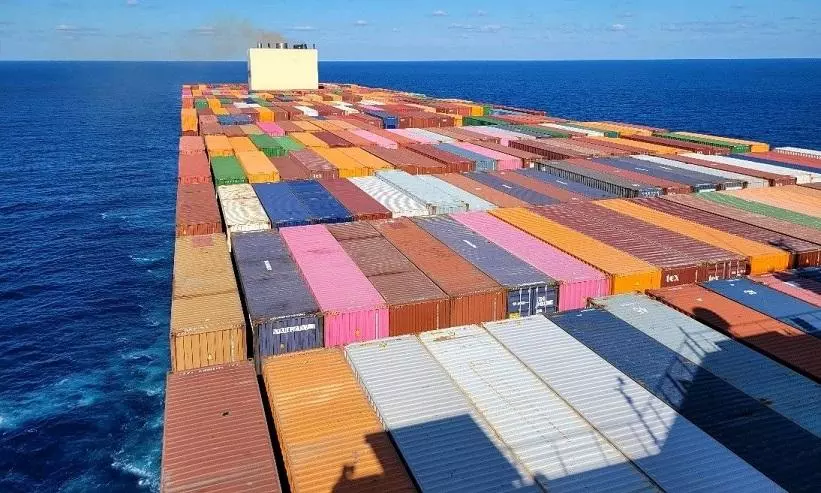Rate tsunami or rate correction, asks Xeneta
"Volumes are still healthy & there are far more carriers carrying far more TEUs than ever."

The American West Coast Port of Long Beach just reported a near-record August 2022; they were only 764 TEUs (0.10 percent) short of August 2021, which was their busiest August on record.
"Despite losing substantial vessels to the USEC ports due to port congestion, causing an import decline exceeding 5 percent, exports were up 1.6 percent, and empties increased 7.2 percent," Xeneta said in its latest update.
Overall, the Port of Long Beach is up 4 percent in the eight months of January–August 2022 vs. 2021, the update added.
"There are many topics of interest to the carriers, shippers, bunker suppliers, forwarders, beneficial cargo owners (BCOs), and others in the box industry. Still, today's plummeting box rates are the subject of most significant interest. A look at our platform or any of the other container rate indexes might make the reader think the collapse in box rates is threatening the industry. But a step back might be in order; it's worth remembering that rates are cyclical, and maybe the slide in box rates is the same sort of correction that so commonly affects commodity prices and stock markets. "
A look at the short-term rates, 40' dry box, no surcharges, Shanghai – Los Angeles ports:
*Sept 24, 2022:$3,764
*Mar 24, 2022: $8,787 (6 months ago)
*Sept 24, 2021: $7,964 (12 months)
*Sept 24, 2020: $3,874 (2 years and in the depths of the Pandemic); and
*Sept 24, 2019: $1,344 (pre-pandemic)
So, does this mean rates are headed to, or under, those pandemic years? "Not necessarily," says the update. "Volumes of boxes carried are still healthy, large-scale blank sailings are yet to be announced outside of the inbound North American service network, and it is worth remembering there are far more box carriers carrying far more TEUs than ever."
The carriers have yet to balance capacity/TEUs/sailings as they so ruthlessly did in Q22020, says Xeneta. "During that time span, they blanked and idled sufficient voyages and ships that enabled them to balance the demand against shipping capacity and then kept the demand-supply ratio in their favour. Not only did they stop the collapse of box rates but they were able to orchestrate capacity management to the degree that led to those multiple quarters of record profits."
A decline in spot rates does not have the same effect on ocean carrier financials as it did pre-pandemic because of the rise in the use of long-term contracts to make good movements on global supply chains more resilient, says Xeneta.
"Carriers today have far more of their volume on long-term contracts instead of multiple spot contracts and at far higher than spot rates. Zim recently said the rates in their 2022 contracts were 2x higher than 2021 rates while Maersk revealed they have 71 percent of their TEUs contracted for 1+ years now compared to 46% in 2019."
While some contracts are expected to be renegotiated as spot rates drop, the remaining high-priced contracts will more than balance the lower-priced spot transactions, Xeneta writes in its report. "However, there is no doubt that carrier and big volume-shipper dynamics will become difficult if the short-term market continues to decline. How difficult is it? We don't know. Relationship building on both sides of the table will be ever more important. "
Most important is the 7 million TEUs of new capacity beginning to arrive next year. "Then we'll see if capacity management can stave off a more permanent rate decline," concludes Xeneta.



